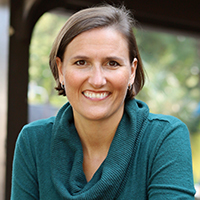Observation Deck
A Closer Look at DME MACs’ Removal of Oxygen CMN Requirement for the PHE
The clarification gives Oxygen providers a clear path forward for claims for the duration of the Covid-19 PHE. What about the long term?
- By Andrea Stark
- Jun 09, 2022
 On June 3, the DME MACs issued revised guidance stating there is no CMN requirement for oxygen during the COVID-19 public health emergency (PHE), even for patients not diagnosed with the illness. The joint publication further explains the pandemic-related CR modifier is not an indication of diagnosis, but a reflection that the claim was submitted during the PHE.
On June 3, the DME MACs issued revised guidance stating there is no CMN requirement for oxygen during the COVID-19 public health emergency (PHE), even for patients not diagnosed with the illness. The joint publication further explains the pandemic-related CR modifier is not an indication of diagnosis, but a reflection that the claim was submitted during the PHE.
The blanket clarification resolves the longstanding question of how to navigate obsolete DME MAC claim rules after September 2021, when CMS expanded oxygen coverage incompatible with the existing 484 Oxygen CMN form.
I know I have been at odds with the DME MACs and most of my DME education contemporaries over this oxygen CMN thing. Until this revision, DME MACs held that a Medicare CMN was necessary to bill oxygen claims even after the September 2021 effective date of the revised Home Use of Oxygen National Coverage Determination (NCD). I wrote in January 2022 how that couldn’t possibly be true based on established Medicare rules.
In my meetings with multiple CMS staff members, I discovered CMS thought it was obvious to contractors, suppliers, and other stakeholders that clinical indication flexibilities related to the PHE can and should be used to bridge the gap between the NCD effective date and the Jan. 1, 2023, CMN elimination deadline. They moved relatively quickly to clarify their intentions when I explained this was not obvious to the industry, and in fact, the MACs were advising suppliers to use pandemic flexibilities sparingly and refrain from a more liberal application to claims covered by the oxygen NCD.
The revised guidance expressly states:
“There is no requirement to submit a CMN or DIF during the PHE for oxygen … regardless of the diagnosis or etiology necessitating the use of the CMN-related or DIF-related DME.” [emphasis added]
The Workaround Is Now Clear for the PHE
Oxygen claims billed with the KX and CR modifiers along with a COVID-19 narrative will prompt claim processors to bypass CMN edits and pay claims without pursuing a signed 484 CMN from the treating practitioner.
To eliminate any hesitation about use of the CR modifier, the article goes on to clarify one of the most misunderstood elements of the PHE flexibilities:
“Use of the CR modifier and COVID-19 narrative simply reflects that the claim was submitted during the COVID PHE.”
Prior to releasing claims, however, suppliers must have:
- A standard written order, and
- Access to medical records that support a need for oxygen.
For audit purposes, suppliers should continue to ensure that treating practitioners follow up with oxygen patients to reaffirm the need for oxygen within one year of setup (or within 90 days for acute conditions). Thereafter, suppliers should secure annual orders for oxygen to support continued medical need for this treatment.
The Long-Term Fate of the CMN
This change precedes a long-term fix: CMS elimination of all CMN and DIF form requirements for dates of service on and after Jan. 1, 2023, including the oxygen CMN. All Medicare contractors must comply by then and reprocess any claims erroneously denied between then and the oxygen NCD’s effective date. With this transitional guidance, however, we do not expect claims will deny.
Many suppliers worry the PHE — and this transitional flexibility that reconciles the oxygen NCD and MAC claim processing limitations — might end before CMS eliminates CMNs. That could reintroduce the discrepancy between the NCD and DME MACs.
The Department of Health and Human Services committed to provide an advance notice of at least 60 days before ending the PHE. This commitment allows us to predict that, if the Secretary does not make such an announcement by mid-August, the PHE flexibilities will cover all oxygen claims through to the new year. In my correspondence with officials, CMS committed to deploy a path to cover oxygen claims in the event the PHE ends prior to Jan. 1, 2023.
This is a big deal, and I am personally grateful to the staff members I worked with directly in CMS’s:
- Division of Policy and Evidence Review.
- Office of Burden Reduction and Health Informatics.
- Division of Policy Coordination and Implementation.
- Division of Supplier Claims Processing.
With this guidance and the forthcoming elimination of all CMNs, CMS has delivered true provider burden relief while averting an unintended claim processing gap created by the expanded NCD.
Sources:
About the Author
Andrea Stark is a Medicare consultant and reimbursement specialist with MiraVista LLC (www.miravistallc.com), where she helps home medical equipment suppliers, hospitals, and pharmacies. Stark began here career in the Medicare field in 1998, starting with five years working for Medicare at the Region C DMERC, Palmetto GBA, and then co-founding MiraVista in 2003.
Andrea Stark is a Medicare consultant and reimbursement specialist for medical equipment suppliers, hospitals, and pharmacies.